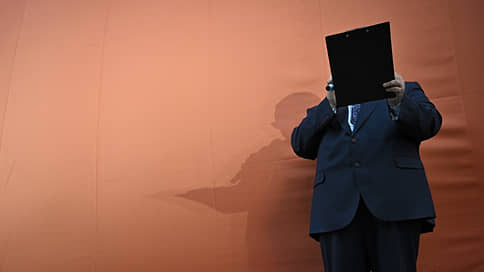Purchases are not for prying eyes
[ad_1]

The data of the Ministry of Finance on the procurement of state-owned companies (223-FZ) in the first half of the year indicate a strong distortion of public statistics on them. The reason is the anti-sanction closure of information about part of the procurement. From the above information, it follows that although spending on 223-FZ increased compared to last year, state-owned companies have greatly reduced them, and state monopolies have increased by as much as 34 times. For the other part of purchases – the state (44-FZ), the Ministry of Finance records an increase in purchases from a single supplier and through a request for quotations, in both cases the reason for this was regulatory changes.
The Ministry of Finance presented data on purchases by the state and state-owned companies for the first half of 2023. The volume of public procurement amounted to 5.4 trillion rubles. against 5 trillion rubles. for the first half of 2022, their number is 1.2 million against 1 million. An increase was also recorded in the purchases of state-owned companies: 860 thousand contracts for 6.3 trillion rubles. against 796 thousand by 5.5 trillion rubles. However, the resulting volumes for companies are still incomparable with the figure for the pre-sanction year 2021 (with 572,000 purchases, it then amounted to 10.4 trillion rubles).
Since March 2022, state-owned companies have been given the opportunity not to disclose part of their purchases due to the risks of sanctions. The volume of classified purchases can reach up to half of all purchases of a state JSC, but data on them is not available even to the state (see Kommersant dated August 3, 2022). From April 2023, the Ministry of Finance was supposed to return procurement data to the “closed loop” of the Unified Procurement Information System (UIS), but they remained inaccessible to external observers and were not included in the report.
Thus, public data on 223-FZ remain distorted: it turns out that the number of purchases of state JSC, even compared to 2022, has almost halved – from 663 to 362 notices, their volume has quadrupled – from 132.2 billion to 31.5 billion rub. At the same time, state monopolies sharply increased their activity – the volume of their purchases increased from 38.7 billion to 1.4 trillion rubles. (34 times), their number – from 54.8 thousand to 62.8 thousand notices, which indicates the enlargement of individual lots. In the visible part of the UIS, purchases took place mainly within the framework of competitive procedures (74%, for 2.7 trillion rubles), but less than half were recognized as successful (for 1.5 trillion rubles).
State purchases (44-FZ) are already affected by regulatory changes: customers have begun to make purchases in the form of a request for quotations more often (the price threshold for them has been increased from 3 million to 10 million rubles, and restrictions on the annual volume have been lifted). The volume of such transactions increased from 67.4 billion rubles. to 97.9 billion rubles, the number – from 93.5 thousand to 150 thousand. The volume of purchases from a single supplier in electronic stores is also growing (the price threshold has been increased from 3 million to 5 million rubles) – eight times, but absolute values remain small (1.9 billion rubles). Most often, government customers are purchased at electronic auctions – 1 million notices for 3 trillion rubles.
The volume of purchases from a single supplier increased slightly as a result of failed competitive procedures (in 70% of cases due to the presence of only one supplier) – from 1.9 trillion to 2 trillion rubles. At the same time, purchases from the “true” single supplier decreased from 1 trillion to 847.3 billion rubles, their number – from 537.4 thousand to 514.3 thousand. In total, customers could not conclude a contract based on the results of 178 thousand purchases by 761 billion rubles, last year due to the break in supply chains there were more such purchases – 224 thousand by 1 trillion rubles. Earlier, analysts, based on EIS data, recorded a surge in failed purchases in the second quarter (the report of the Ministry of Finance does not confirm this), which indicated a mismatch between supply and demand. So, despite the growth in the number of suppliers, the needs of customers remain unsatisfied, including due to less competitive products in terms of price and quality (see Kommersant of July 12).
The Ministry of Finance in the new report separately took into account purchases with access restrictions, including bans for foreign manufacturers. The number of such procedures in 2023 increased by 25%, from 553,000 to 694,000, but in terms of money, purchases grow more slowly — by 5% (1.3 trillion rubles). Note that at the same time the department indicated that the total volume of Russian goods (including those supplied during the performance of work and the provision of services) in the second quarter amounted to a different amount – 773 billion rubles.
[ad_2]
Source link






